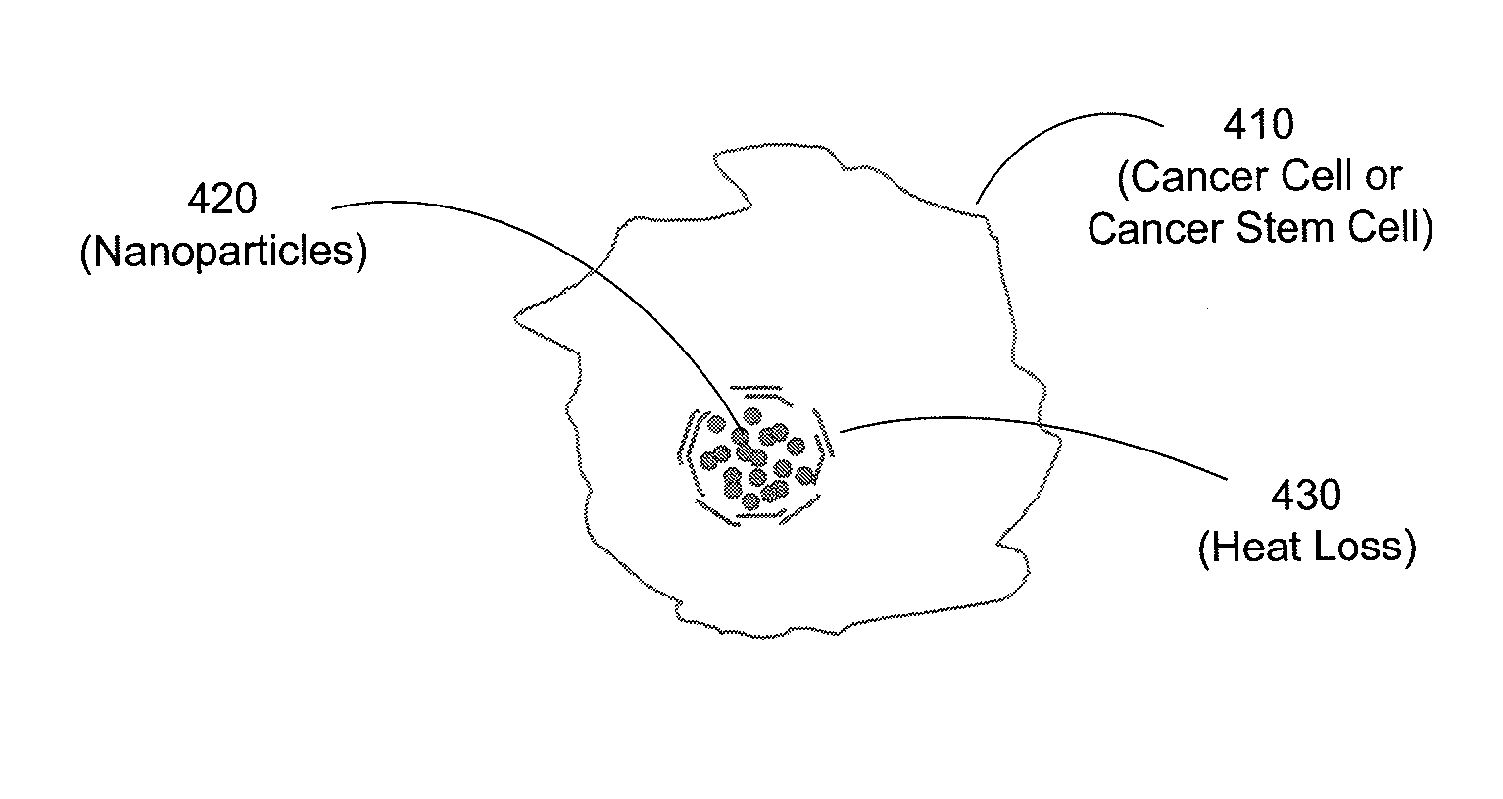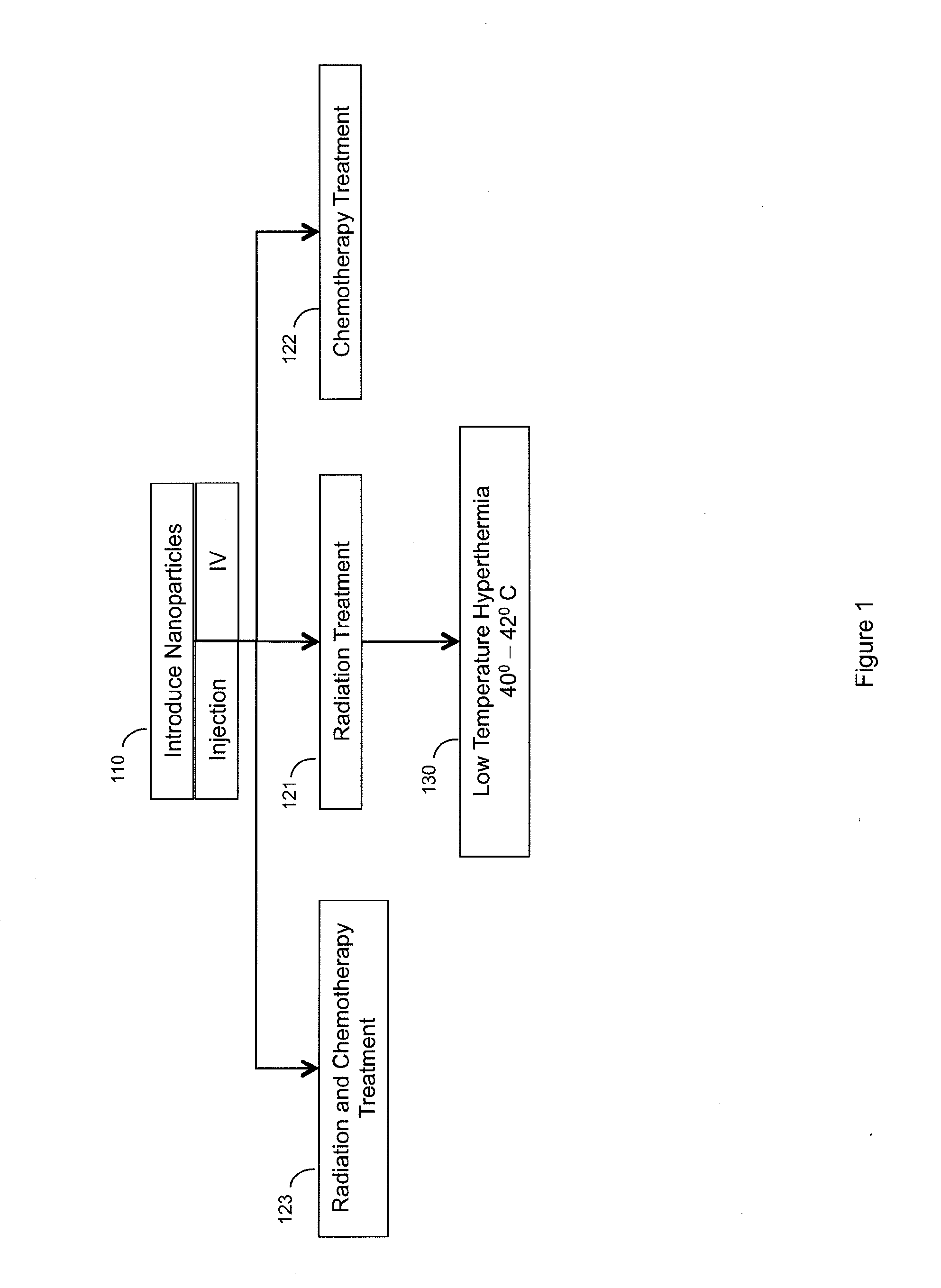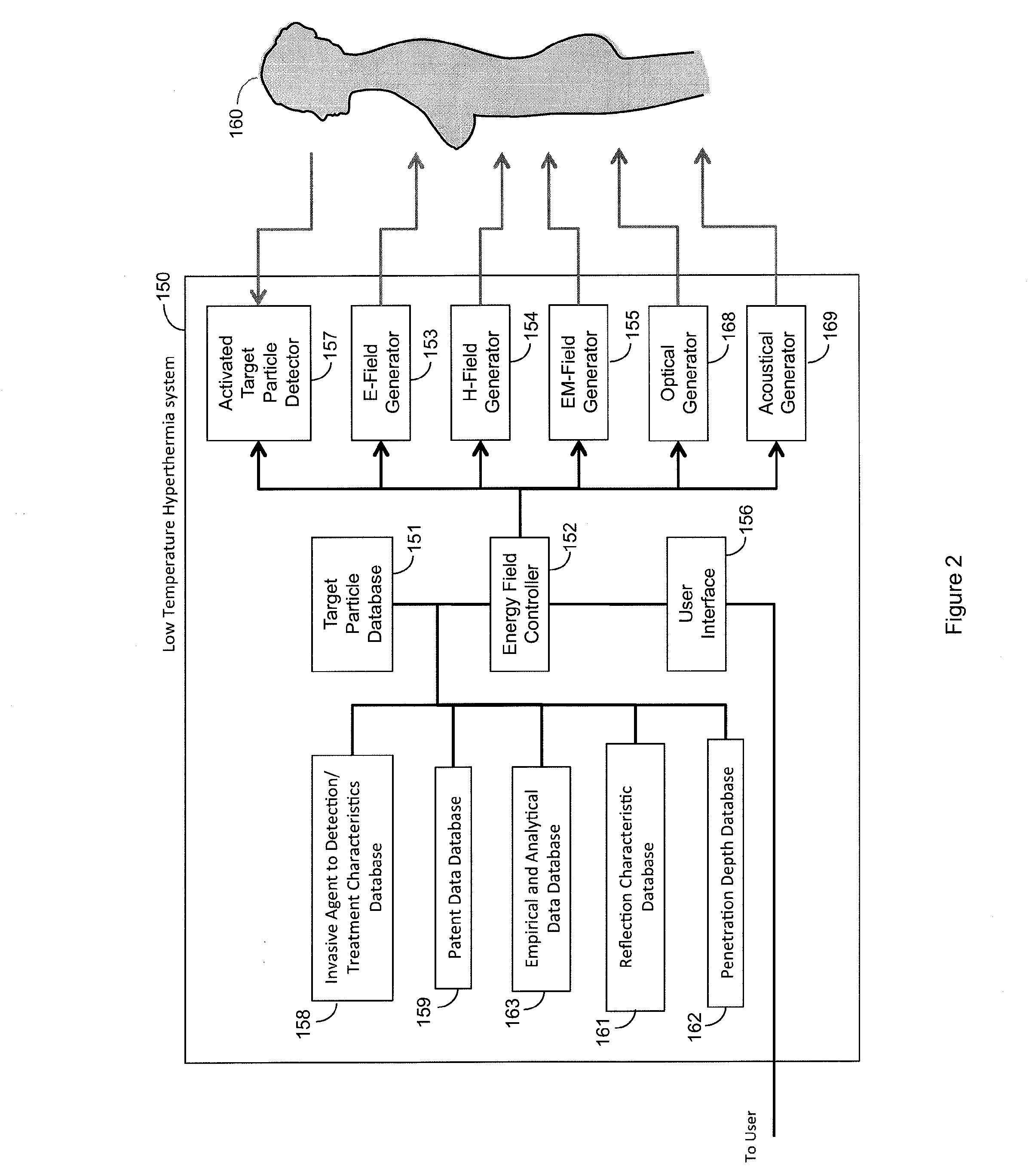Low temperature hyperthermia system for therapeutic treatment of invasive agents
a technology of invasive agents and hyperthermia, which is applied in the field of low temperature hyperthermia systems for the treatment of invasive agents, can solve the problems of large temperature variance across tumors, poorly regulated heat-based cancer treatment methods, and cancer to rebound at an even higher rate, so as to minimize the release of heat shock proteins, tightly controlled temperature rise, and minimize the effect of heat shock proteins
- Summary
- Abstract
- Description
- Claims
- Application Information
AI Technical Summary
Benefits of technology
Problems solved by technology
Method used
Image
Examples
Embodiment Construction
Treatment Approaches Used in the Low Temperature Hyperthermia System
[0043]The treatment approaches used in the Low Temperature Hyperthermia System are graphically illustrated in FIG. 1. The Low Temperature Hyperthermia System typically makes use of a pre-treatment process of radiation or chemotherapy (or both) to treat the cancer followed by Low Temperature Hyperthermia (LTH) treatment of the cancer. A first step of the process is where the specially designed nano-particles are delivered into the patient (living organism) by Intravenous (IV) and / or direct Injection at the cancer site (step 110). The application of an energy field causes the nano-particles to rise to a pre-determined temperature that resides in the low temperature hyperthermia region, 42° C. and below. It should be noted that the optimal low temperature hyperthermia region may be different for different people based on many factors. It could also be different for animals, since nothing precludes this treatment paradi...
PUM
 Login to View More
Login to View More Abstract
Description
Claims
Application Information
 Login to View More
Login to View More - R&D
- Intellectual Property
- Life Sciences
- Materials
- Tech Scout
- Unparalleled Data Quality
- Higher Quality Content
- 60% Fewer Hallucinations
Browse by: Latest US Patents, China's latest patents, Technical Efficacy Thesaurus, Application Domain, Technology Topic, Popular Technical Reports.
© 2025 PatSnap. All rights reserved.Legal|Privacy policy|Modern Slavery Act Transparency Statement|Sitemap|About US| Contact US: help@patsnap.com



